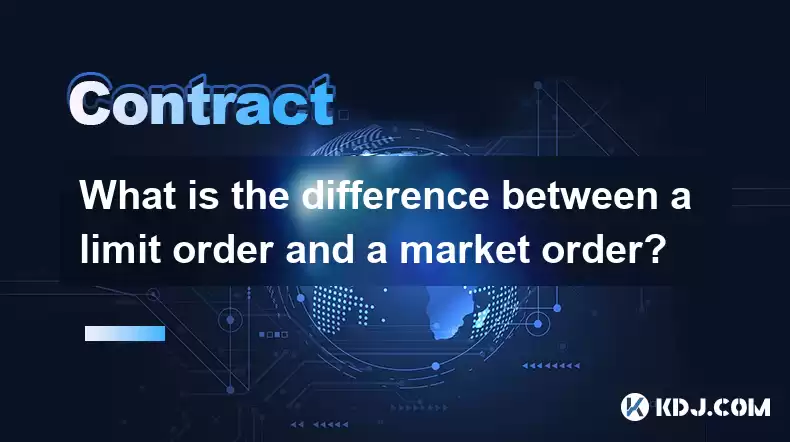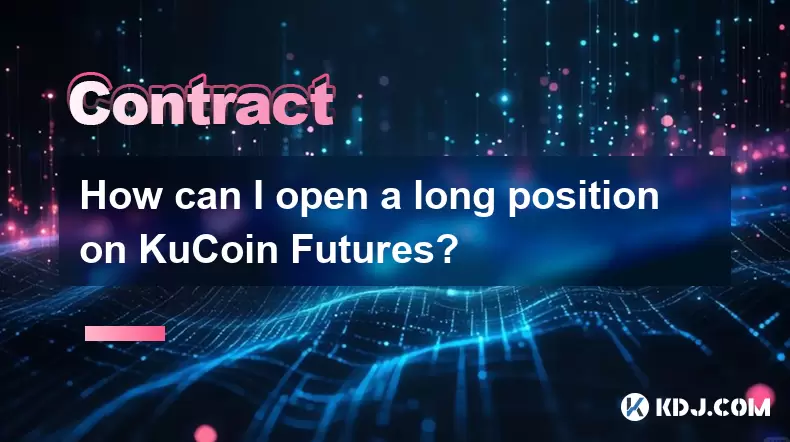-
 Bitcoin
Bitcoin $116700
0.24% -
 Ethereum
Ethereum $3973
4.34% -
 XRP
XRP $3.283
7.68% -
 Tether USDt
Tether USDt $1.000
0.01% -
 BNB
BNB $789.8
2.27% -
 Solana
Solana $176.2
3.31% -
 USDC
USDC $0.9999
0.00% -
 Dogecoin
Dogecoin $0.2238
5.14% -
 TRON
TRON $0.3389
-0.51% -
 Cardano
Cardano $0.7907
4.03% -
 Stellar
Stellar $0.4527
10.02% -
 Hyperliquid
Hyperliquid $41.07
4.27% -
 Sui
Sui $3.794
1.77% -
 Chainlink
Chainlink $19.49
10.40% -
 Bitcoin Cash
Bitcoin Cash $580.9
0.74% -
 Hedera
Hedera $0.2617
4.32% -
 Avalanche
Avalanche $23.41
3.67% -
 Ethena USDe
Ethena USDe $1.001
-0.03% -
 Litecoin
Litecoin $122.4
1.38% -
 Toncoin
Toncoin $3.364
1.49% -
 UNUS SED LEO
UNUS SED LEO $8.988
0.37% -
 Shiba Inu
Shiba Inu $0.00001295
2.82% -
 Uniswap
Uniswap $10.62
5.75% -
 Polkadot
Polkadot $3.922
4.46% -
 Dai
Dai $1.000
0.01% -
 Bitget Token
Bitget Token $4.494
2.15% -
 Monero
Monero $268.0
-1.30% -
 Cronos
Cronos $0.1523
3.68% -
 Pepe
Pepe $0.00001127
4.43% -
 Aave
Aave $285.4
4.85%
What is the difference between a limit order and a market order?
Use market orders for quick trades in stable, liquid markets, and limit orders for price control in volatile markets or long-term trading.
Apr 08, 2025 at 05:14 pm

When trading cryptocurrencies, understanding the different types of orders you can place is crucial for effective trading. Two of the most common types of orders are limit orders and market orders. Each serves a different purpose and comes with its own set of advantages and disadvantages. In this article, we will delve into the specifics of both types of orders, helping you understand their differences and when to use each one.
What is a Market Order?
A market order is an order to buy or sell a cryptocurrency at the current market price. When you place a market order, the transaction is executed immediately at the best available price in the market. This type of order is ideal for traders who prioritize speed and want to ensure that their order is filled quickly.
Advantages of Market Orders:
- Immediate Execution: Market orders are executed almost instantly, which is beneficial in fast-moving markets.
- Guaranteed Execution: As long as there is liquidity in the market, a market order will be filled.
Disadvantages of Market Orders:
- Price Slippage: The price at which your order is executed may differ from the price you see when you place the order, especially in volatile markets.
- Lack of Control: You have no control over the exact price at which your order is filled.
What is a Limit Order?
A limit order is an order to buy or sell a cryptocurrency at a specific price or better. Unlike a market order, a limit order is not executed immediately. Instead, it is placed on the order book and waits until the market price reaches the specified limit price. This type of order is ideal for traders who want more control over the price at which they buy or sell.
Advantages of Limit Orders:
- Price Control: You can set the exact price at which you want to buy or sell, giving you more control over your trades.
- No Slippage: Since the order is executed at the specified price or better, you avoid the risk of price slippage.
Disadvantages of Limit Orders:
- Execution Uncertainty: There is no guarantee that your order will be filled, especially if the market does not reach your specified price.
- Delayed Execution: Your order may take longer to be filled, which can be a disadvantage in fast-moving markets.
When to Use a Market Order
You should consider using a market order in the following scenarios:
- High Liquidity: If the cryptocurrency you are trading has high liquidity, a market order is likely to be filled at a price close to the current market price.
- Urgency: If you need to enter or exit a position quickly, a market order ensures immediate execution.
- Stable Markets: In stable markets with minimal price fluctuations, the risk of slippage is lower, making market orders more suitable.
When to Use a Limit Order
You should consider using a limit order in the following scenarios:
- Price Sensitivity: If you have a specific price in mind at which you want to buy or sell, a limit order allows you to set that price.
- Volatile Markets: In volatile markets, a limit order can protect you from adverse price movements by ensuring you only trade at your specified price or better.
- Long-Term Trading: If you are not in a rush to execute your trade, a limit order can help you achieve a better price over time.
How to Place a Market Order
Placing a market order is straightforward and can be done on most cryptocurrency exchanges. Here are the steps to follow:
- Log into Your Exchange Account: Access your account on the cryptocurrency exchange where you want to trade.
- Navigate to the Trading Page: Go to the trading page for the specific cryptocurrency pair you want to trade.
- Select Market Order: Choose the "Market Order" option from the order type menu.
- Enter the Amount: Specify the amount of cryptocurrency you want to buy or sell.
- Review and Confirm: Review your order details and confirm the transaction. The order will be executed immediately at the best available market price.
How to Place a Limit Order
Placing a limit order involves a few more steps than a market order but gives you more control over the price. Here is how to do it:
- Log into Your Exchange Account: Access your account on the cryptocurrency exchange where you want to trade.
- Navigate to the Trading Page: Go to the trading page for the specific cryptocurrency pair you want to trade.
- Select Limit Order: Choose the "Limit Order" option from the order type menu.
- Set the Limit Price: Enter the specific price at which you want to buy or sell the cryptocurrency.
- Enter the Amount: Specify the amount of cryptocurrency you want to buy or sell.
- Review and Confirm: Review your order details and confirm the transaction. The order will be placed on the order book and will be executed when the market reaches your specified price.
Examples of Market and Limit Orders
To better understand the difference between market and limit orders, let's look at some examples:
- Market Order Example: Suppose you want to buy Bitcoin (BTC) immediately. You place a market order to buy 1 BTC. If the current market price is $30,000, your order will be executed at around $30,000, depending on the available liquidity.
- Limit Order Example: Suppose you want to buy Bitcoin (BTC) but only if the price drops to $29,000. You place a limit order to buy 1 BTC at $29,000. Your order will be executed only if the market price reaches or falls below $29,000.
Frequently Asked Questions
Q: Can I cancel a market order after it has been placed?
A: No, once a market order is placed, it is executed immediately and cannot be canceled. If you need to cancel an order, you should use a limit order instead, which remains on the order book until it is filled or canceled.
Q: What happens if my limit order is not filled?
A: If your limit order is not filled, it remains on the order book until it is either filled or canceled by you. You can monitor the status of your order on the exchange's trading page and decide whether to adjust the limit price or cancel the order.
Q: Are there any fees associated with market and limit orders?
A: Yes, most cryptocurrency exchanges charge fees for both market and limit orders. The fee structure can vary between exchanges, so it's important to check the fee schedule of the exchange you are using. Typically, market orders may have slightly higher fees due to their immediate execution.
Q: Can I use both market and limit orders in the same trading strategy?
A: Yes, many traders use a combination of market and limit orders as part of their trading strategy. For example, you might use a market order to enter a position quickly and then use limit orders to set profit targets or stop-loss levels.
Disclaimer:info@kdj.com
The information provided is not trading advice. kdj.com does not assume any responsibility for any investments made based on the information provided in this article. Cryptocurrencies are highly volatile and it is highly recommended that you invest with caution after thorough research!
If you believe that the content used on this website infringes your copyright, please contact us immediately (info@kdj.com) and we will delete it promptly.
- Roman Storm, Funding Effort, and the Looming Defense Retrial: A New York Minute on the Tornado Cash Case
- 2025-08-09 02:50:14
- Crypto's Wild Ride: XRP, Dogecoin, and the Altcoin Surge You Can't Ignore
- 2025-08-09 02:50:14
- Elon Musk, Bitcoin, and the Enduring Power of Approval: A Crypto Love Story?
- 2025-08-09 03:50:15
- Ruvi AI: The Next Big Thing After Ripple on CoinMarketCap?
- 2025-08-09 03:50:15
- Floki Price Surges: Elliott Wave and Fibonacci Setups Point to Potential Gains!
- 2025-08-09 02:30:16
- Pepe Price, RTX (Remittix?) & the $10K ETH Dream: NYC Crypto Chatter
- 2025-08-09 02:30:16
Related knowledge

What is the difference between realized and unrealized PNL on KuCoin?
Aug 09,2025 at 01:49am
Understanding Realized and Unrealized PNL on KuCoinWhen trading on KuCoin, especially in futures and perpetual contracts, understanding the distinctio...

How does KuCoin Futures compare against Binance Futures in terms of features?
Aug 09,2025 at 03:22am
Trading Interface and User ExperienceThe trading interface is a critical component when comparing KuCoin Futures and Binance Futures, as it directly i...

What is the distinction between mark price and last price on KuCoin?
Aug 08,2025 at 01:58pm
Understanding the Basics of Price in Cryptocurrency TradingIn cryptocurrency exchanges like KuCoin, two key price indicators frequently appear on trad...

What are the specific maker and taker fees on KuCoin Futures?
Aug 08,2025 at 08:28am
Understanding Maker and Taker Fees on KuCoin FuturesWhen trading on KuCoin Futures, users encounter two primary types of fees: maker fees and taker fe...

Can you explain the difference between cross margin and isolated margin on KuCoin?
Aug 09,2025 at 02:57am
Understanding Margin Trading on KuCoinMargin trading on KuCoin allows traders to borrow funds to increase their trading position beyond their actual c...

How can I open a long position on KuCoin Futures?
Aug 09,2025 at 02:07am
Understanding KuCoin Futures and Long PositionsOpening a long position on KuCoin Futures means you are speculating that the price of a cryptocurrency ...

What is the difference between realized and unrealized PNL on KuCoin?
Aug 09,2025 at 01:49am
Understanding Realized and Unrealized PNL on KuCoinWhen trading on KuCoin, especially in futures and perpetual contracts, understanding the distinctio...

How does KuCoin Futures compare against Binance Futures in terms of features?
Aug 09,2025 at 03:22am
Trading Interface and User ExperienceThe trading interface is a critical component when comparing KuCoin Futures and Binance Futures, as it directly i...

What is the distinction between mark price and last price on KuCoin?
Aug 08,2025 at 01:58pm
Understanding the Basics of Price in Cryptocurrency TradingIn cryptocurrency exchanges like KuCoin, two key price indicators frequently appear on trad...

What are the specific maker and taker fees on KuCoin Futures?
Aug 08,2025 at 08:28am
Understanding Maker and Taker Fees on KuCoin FuturesWhen trading on KuCoin Futures, users encounter two primary types of fees: maker fees and taker fe...

Can you explain the difference between cross margin and isolated margin on KuCoin?
Aug 09,2025 at 02:57am
Understanding Margin Trading on KuCoinMargin trading on KuCoin allows traders to borrow funds to increase their trading position beyond their actual c...

How can I open a long position on KuCoin Futures?
Aug 09,2025 at 02:07am
Understanding KuCoin Futures and Long PositionsOpening a long position on KuCoin Futures means you are speculating that the price of a cryptocurrency ...
See all articles

























































































